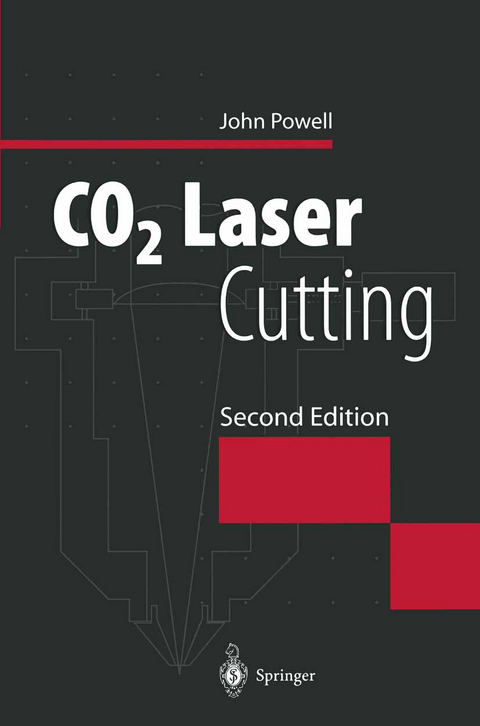
CO2 Laser Cutting
Springer London Ltd (Verlag)
978-1-85233-047-7 (ISBN)
The laser has given manufacturing industry a new tool. When the laser beam is focused it can generate one of the world's most intense energy sources, more intense than flames and arcs, though similar to an electron beam. In fact the intensity is such that it can vaporise most known materials. The laser material processing industry has been growing swiftly as the quality, speed and new manufacturing possibilities become better understood. In the fore of these new technologies is the process of laser cutting. Laser cutting leads because it is a direct process substitu tion and the laser can usually do the job with greater flexibility, speed and quality than its competitors. However, to achieve these high speeds with high quality con siderable know how and experience is required. This information is usually carefully guarded by the businesses concerned and has to be gained by hard experience and technical understanding. Yet in this book John Powell explains in lucid and almost non technical language many of these process wrinkles concerning alignment, cornering, pulsing, water jets, material properties, cutting speeds as well as tricks with surface coating and much much more. It is a book which managers and technicians in laser job shops and laser processing facilities would be foolish not to read.
1. The Basic Principles.- 1.1 The Cutting Process.- 1.2 How Materials Respond to Laser Light.- 1.3 How CO2 Lasers Work.- 1.4 Laser Modes.- 2. Laser Cutting Steels.- 2.1 Mild steels.- 2.2 Alloy Steels.- 3. Cutting Non-ferrous Metals.- 3.1 Introduction.- 3.2 Titanium Alloys.- 3.3 Aluminium Alloys.- 3.4 Nickel Alloys.- 3.5 Copper Alloys.- 3.6 General Comments.- 4. Cutting Non-metals.- 4.1 Introduction.- 4.2 Polymers.- 4.3 Wood Based Products.- 4.4 Ceramics and Glasses.- 4.5 Composites and Miscellaneous Materials.- 5. Setting Up for Cutting.- 5.1 Introduction.- 5.2 Beam Alignment.- 5.3 Finding the Focus Position.- 5.4 Nozzles and Nozzle Alignment.- 5.5 Jigging.- 5.6 Tuning the Laser.- 6. Troubleshooting.- 6.1 Introduction and Checklist.- 6.2 Notes on Checklist.- 7. Safety Guidelines.- 7.1 Introduction.- 7.2 Beam Exposure.- 7.3 Fumes.- 7.4 Electrocution.- 7.5 Fires.- 8. Alternative Cutting Methods.- 8.1 Nd:YAG Laser Cutting.- 8.2 Plasma Arc Cutting.- 8.3 Abrasive Water Jet Cutting.- 8.4 Oxygen—Flame Cutting.- 8.5 A Summary of the Strengths and Weaknesses of Each Process Compared with CO2 Laser Cutting.- 9. The Physics and Design of CO2 Lasers.- 9.1 Introduction.- 9.2 The Physics of CO2 Lasers.- 9.3 Aspects of the Design of CO2 Lasers.- 10. Some Aspects of the Physics and Chemistry of Laser Cutting.- 10.1 Introduction.- 10.2 The Energy Balance in the Cut Zone and Its Relationship to the Efficiency of the Process.- 10.3 The Role of Oxidation when Cutting Steels.- 10.4 Conductive Losses Experienced when Cutting Steels.- 10.5 Notes on Reflected, Transmitted, Radiated and Convective Losses from the Cut Zone.- 10.6 Notes on the Focusing Characteristics of CO2 Lasers.- 11. Bibliography and Further Reading.- 11.1 Conference Proceedings and Journals.- 11.2 Books.- 11.3 SpecificPapers.- 11.4 Miscellaneous References.- 11.5 Further reading update for the second edition of this book.
| Erscheint lt. Verlag | 1.6.1998 |
|---|---|
| Zusatzinfo | 33 Illustrations, black and white; XVII, 248 p. 33 illus. |
| Verlagsort | England |
| Sprache | englisch |
| Maße | 155 x 235 mm |
| Themenwelt | Naturwissenschaften ► Physik / Astronomie ► Optik |
| Technik ► Elektrotechnik / Energietechnik | |
| Technik ► Maschinenbau | |
| ISBN-10 | 1-85233-047-3 / 1852330473 |
| ISBN-13 | 978-1-85233-047-7 / 9781852330477 |
| Zustand | Neuware |
| Haben Sie eine Frage zum Produkt? |
aus dem Bereich


